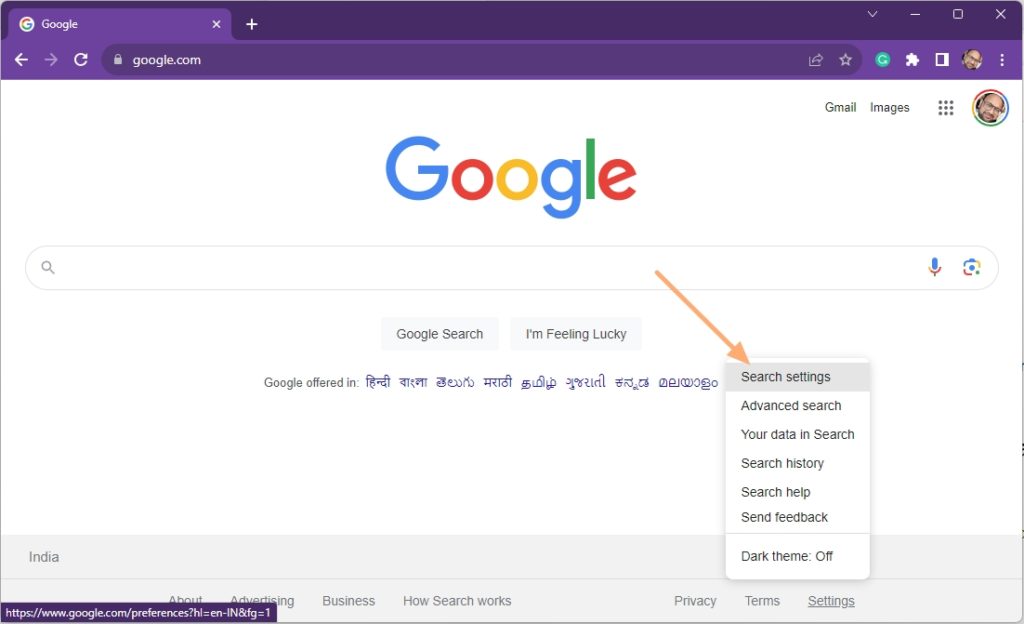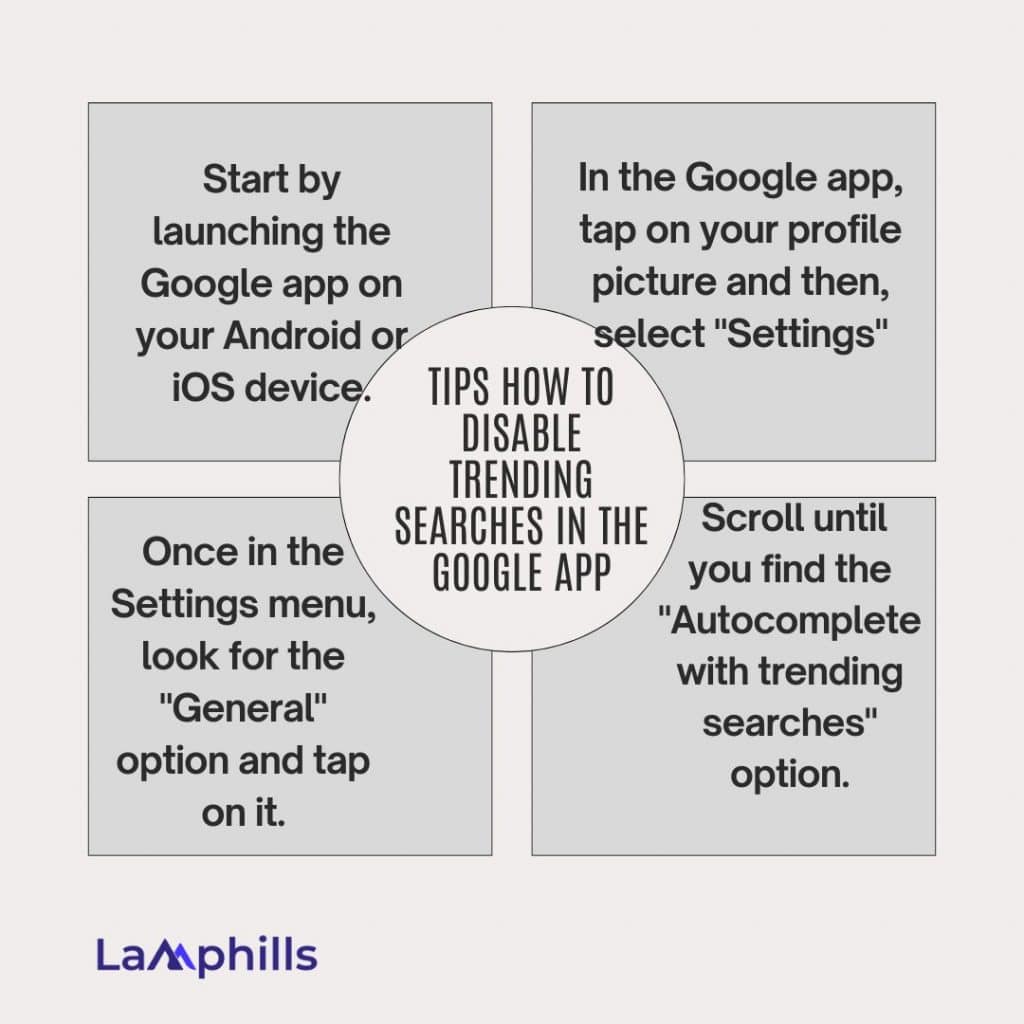Don’t you think that as the internet becomes a staple in our daily lives, having a personalized online experience is becoming more crucial? I’ve noticed that Google, which is arguably the most popular search engine out there, offers a variety of features to enhance user experience, one of which is trending searches. This feature is pretty useful, don’t you think? It allows us to stay on top of the latest news and trends, giving us a glimpse into what topics are catching people’s attention in real time.
However, finding specific topics can sometimes become difficult for search engines’ autocomplete function. It can be quite distracting, especially when it suggests terms that are irrelevant to our search. Turning off autocomplete, especially for trending searches, can make your search experience smoother. Would you like to learn more about how to turn off autocomplete while still benefiting from trending searches? This article dives into the detailed steps to help you customize smoothly your search experience effectively.
Key Points
- According to Google, autocomplete can reduce typing by up to 25% overall.
- Typing search phrases on mobile devices often results in errors because of their small keyboards. Customers may avoid the trouble of trying to spell entire words by using autocomplete, which suggests matches as they go.
- You may customize what appears during your internet searches to suit your needs and avoid being swayed by trends or hot subjects by using these techniques across various browsers and applications.
- Remember that each browser or program has its unique setup for things like Trending searches, so changing one won’t affect the others.
- You might want to completely disable autocomplete if someone else frequently uses your computer or if you are now using a public computer.
What is Autocomplete?
Have you ever typed something in a search box on your computer, only for Google to suggest what they think you’re trying to type? I’m sure that experience is familiar to you, given the role of the internet in our lives today. If you have a digital device that allows you to search for information online, you’ve most likely had this experience. Do you know what this experience is called? Let me explain it to you, starting with its definition.
Search engines have a feature called autocomplete that makes keyword suggestions based on the characters you’ve already typed. Possible matching terms and related benefits will appear in the autocomplete search box as you type, either as a drop-down list or as lighter text. You can accept an autocomplete recommendation that matches your intent by clicking, tapping, or using the “return” key or button. Autocomplete, also known as word completion or type-ahead, expedites the search process.
What are the Benefits of Autocomplete?
Google claims that autocomplete can reduce your overall typing by up to 25%. Type-ahead suggestions save your keystrokes and help can help you find what you are looking for faster. In my experience, personal productivity can significantly affect my revenue in the e-commerce industry. Based on a Spyfu study of websites with and without autocomplete, I’ve discovered that using it can increase search conversion by as much as 24%.
Autocomplete is useful in several scenarios:
- Typing search phrases on mobile devices often results in errors due to their small keyboards. Customers may avoid the trouble of trying to spell entire words by using autocomplete, which suggests matches as they go.
- Customers who utilize mobile devices with talk-to-text capabilities will find autocomplete useful. Autocomplete converts Ad-libbed language into precise terms, which offers whole sentences and long-tail suggestion options.
- Shoppers can also benefit from autocomplete, which translates words into product names to help them understand merchandise jargon. Instead of somewhat limited brand names or lengthy adjectives by hand, users can use autocomplete to supply the appropriate keywords that will surface for the appropriate products.

Credit: Tech jankie
Why Turnoff Autocomplete with Trending Searches
These pointers are occasionally useful. However, sometimes, they can be quite annoying. Disabling them can also be a rather private process. Google keeps track of everything you do online, including searches you do, Chrome browsers you use, purchases you make, and more.
Based on your interests, previous purchases, and lifestyle, some firms use this information to offer their products and services to you. If you want to keep your internet activities private, you should disable trending searches.
Check out this article: Top 10 Keyword Research Services in 2024
How Do I Delete Autocomplete With Trending Searches on Chrome Browser?
One of the most widely used search apps is Chrome, and to avoid that auto-completion, you will have to turn it off. I have explained how to turn it off in this section. In Chrome, you can delete all or just some of your autocomplete information. But let me examine these two instances.
Clear All Autocomplete Entries Promptly From Chrome Settings in Your Toolbar.
To remove all of your autocomplete information in Chrome, follow the procedures below:
- Open Chrome.
- Click the three-dot symbol > More Tools > Clear browsing history…
- In the new box, choose the Advanced tab and pick all time from the drop-down menu.
- Check the “autocomplete form data” box. If you do not want to erase other data, uncheck all the other options.
- Click the Clear Data button.
You have now removed all autocomplete data in Chrome.

Credit: Nitche purs
Clear Some Autocomplete Entries Directly via the Autocomplete Tab of Chrome Settings
Follow the instructions below to clear only a portion of your autocomplete information in Chrome:
- Open Chrome.
- Click the three-dot sign in the upper-right corner.
- Click Settings.
- Click on the autocomplete tab.
- You can manually update or delete the many autocomplete categories: passwords, payment methods, addresses, etc.

How to Make Specific Changes to What Autocomplete Saves
You might want to completely disable autocomplete if someone else frequently uses your computer or if you are now using a public computer. Let me discuss the many kinds of autocomplete data that Google stores and how to remove it. This might also be a good idea if you frequently use these gadgets in public settings where thieves could steal them.
#1. Passwords
You may store passwords in Chrome by using the “Offer to save passwords” feature. Almost all contemporary browsers support this. Nevertheless, it may not be the easiest or safest solution to save passwords in a browser. This toggle can be used to turn off Chrome’s password-saving functionality. This feature can also be turned off in other browsers.
#2. Payment methods
Locate “Save and fill payment methods” and flip the toggle button to switch off autocomplete for payment methods.
#4. Addresses and more
Your phone number, physical address, email address, and other details are included in this data. Locate “Save and fill addresses” and turn the toggle off like above.
Checklist on Trending Searches
How Does Autocomplete Work?
Autocomplete functions just as its name implies. Chrome will automatically save the information you entered into different form fields and add it the next time you see that field.
Autocomplete reduces the pain of repeatedly entering information by saving you time. Typing in different letter and number combinations to fill out my address on a computer or laptop doesn’t take long for most people, but it can take some time if your address contains odd or non-dictionary terms that cause autocorrect to malfunction. The shipment delays could lead to more issues if it produces erroneous data on those forms.
How Do I Turn On Autocomplete Search?
While typing, autocomplete presents users with helpful queries. When autocomplete overview is turned on, feature settings receive suggestions like “tavern” or “tapestry.” Google creates these autocompletes by examining several aspects of your search engine, such as the pages it displays.
Allow autocomplete.
- Choose a search engine from the list to update.
- Click Overview, and then scroll down to Search features. Select “All search feature settings”.
- Scroll down to Autocomplete in the search features list
- Toggle On/Off to enable or disable autocomplete. Autocompletion matched to your search engine may take 2-4 days to appear.
Include Autocompletions From All Through the Web:
Based on the websites you add to your search engine, autocomplete customized for it are produced. The Include autocomplete from the full web option allows you to add more autocomplete, this might not be enough. To get that done fellow this process.
- Choose the search engine you wish to modify from the list of search engines.
- Select Overview, then select Search features by swiping down. “All search features settings” should be clicked.
- Go to Autocomplete by scrolling down under Search features.
- Turn On/Off to Activate/Deactivate Add web-wide autocomplete as well.
Reasons to Disable Trending Searches on Google
You may have a good reason to disable Google Trending Searches. Since every person’s experience is unique, you should consider what is important to you before deciding whether or not to disable this function. The following are some typical explanations for why users choose to exclude Trending Searches from their search results:
#1. Privacy Concerns with Trending Searches
The way Trending Searches gathers data may not sit well with those who value their privacy. This feature collects data on often searched terms, which may lead you to wonder what else is being monitored and how it is being used.
#2. Distraction Caused by Trending Searches
Viewing a list of popular topics when you’re trying to find something specific can be annoying. Popular searches may entice you to click on them and look into irrelevant topics, diverting your focus from your needs, which is the goal of your search.
#3. Personalization of Search Results Without Trending Searches
You can get more personalized search results by disabling trending searches. Your searches can remain focused on what you’re interested in without being distracted by popular trends, providing you with results that are pertinent to your needs independent of outside influences.
By considering these factors, you can choose whether having a more individualized, private, and distraction-free search experience matters more than knowing what other people are searching for.
How to Disable Google’s Trending Searches on Desktop
Personalized web experiences include controlling Google Trending Searches visibility and becoming more tailored to your interests. If you use it frequently, you probably use one of the web browsers on your desktop computer, such as Chrome, Safari, or the Google App. Turning off Trending Searches varies depending on the browser. Let’s go over each step:
Disabling Trending Searches on Chrome Desktop
One of the most widely used web browsers is Google Chrome, renowned for its quickness and compatibility with Google services. Here’s how to disable Chrome’s Trending Searches:
- Launch Google Chrome.
- To open the menu, click on the three vertical dots in the top right corner.
- Choose ‘Settings’ from the menu.
- Scroll down and click ‘Search engine’.
- Navigate to ‘Manage Search Engines’.
- Look for the area under ‘Autocomplete with popular queries’.
- There should be an option to disable Trending Searches here, either as a toggle switch or a selection menu.
- To disable it, select ‘Off’ or flick the switch.
- Close the settings tab and your changes will be saved immediately.
Please be aware that other autocomplete features, such as predictions based on past searches, will remain unchanged if you disable Trending Searches. Ensure you have the most recent version of Chrome installed if you experience any issues trying to disable Trending Searches. A Google Chrome update can frequently resolve problems with incorrectly saved settings.
Turning Off Trending Searches on Safari Desktop
Similarly simple is the process of turning off Trending Searches for Mac users who use Safari as their web browser:
- Open Safari.
- Click ‘ Safari ‘ in the top menu bar, then choose ‘Preferences’ from the drop-down menu.
- Navigate to the ‘Search’ tab in Preferences.
- Look for a section labeled ‘Smart Search Field’.
- Uncheck the option labeled ‘Include search engine suggestions’.
- This should disable trending searches and other search engine suggestions.
Verify whether your modifications take effect immediately, as is typically the case with Safari preferences. Occasionally, Safari modifications might not take effect if there are system or browser-related issues. Updating your program can help avert these kinds of problems.
Disabling Trending Searches in the Google App
Here’s how to disable Trending Searches if you’re using an emulator or other specialized software platform to access the Google software on your desktop:
- Launch the Google app.
- Select your profile photo or initial in the top right corner of the app screen.
- From there, navigate to ‘Settings’.
- Go to the ‘General’ section of Settings.
- Look for ‘Autocomplete with trending searches’ and disable it with the toggle switch or ‘Off.’
After making the necessary adjustments, try searching for something to see whether trending Searches still appear. This will ensure that the changes have taken effect. Remember that each browser or program has its unique setup for things like Trending searches, so changing one won’t affect the others. You may customize what appears during your internet searches to suit your needs and avoid being swayed by trends or hot subjects by using these techniques across various browsers and applications.






